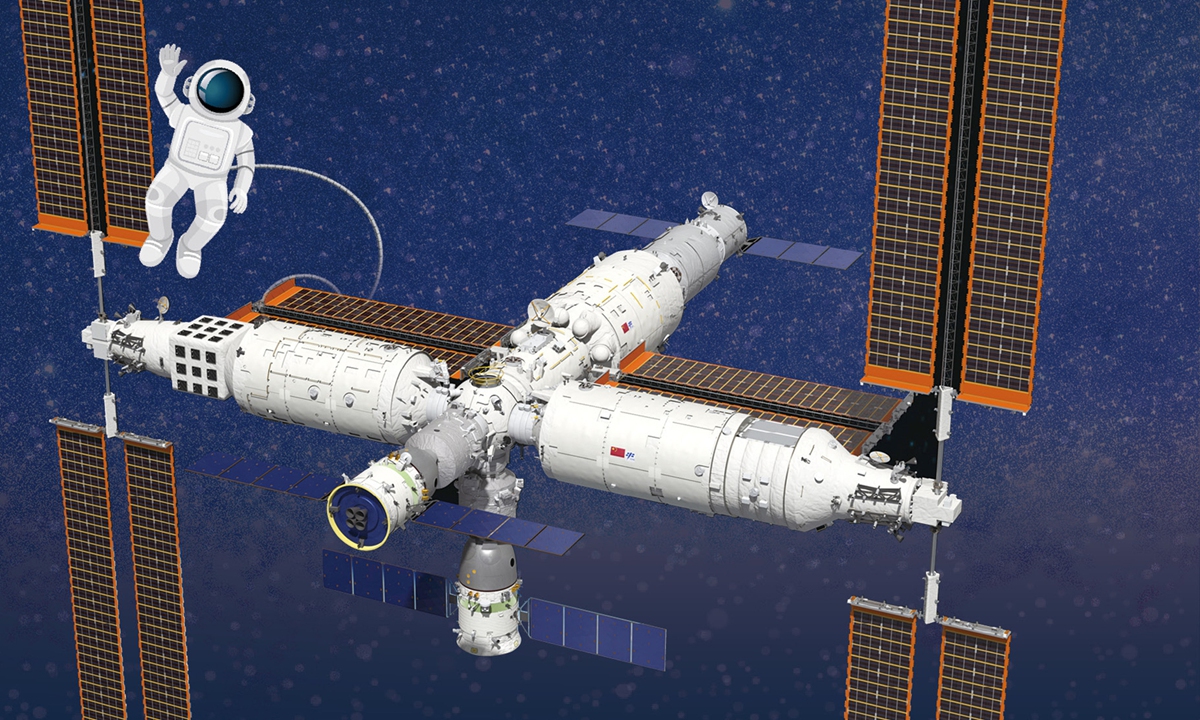
China Space Station
The China space station will conduct over 1,000 research projects in its operations over the next 10 to 15 years, while also promoting scientific outreach and international cooperation, according to Technology and Engineering Center for Space Utilization, Chinese Academy of Sciences.
As China's national space laboratory, which encompasses the broadest range of space science disciplines, along with unique advantages of human participation and transportation, the Chinese space station plans to operate stably in orbit for over 10 years, the center said.
In the future, during the course of conducting over 1,000 research projects, it aims to achieve major breakthroughs in key frontier fields and position itself at the forefront of global scientific research. Also, it plans to achieve systematic understanding and significant results in applied fundamentals and new technologies, addressing major national needs.
In its summary of the scientific research and development achievements made by the space at a press conference on Monday, the center also said that the Chinese space station offers a distinct and effective platform for addressing critical scientific and application challenges by providing long-term microgravity, cosmic radiation, and unique environments, as well as advantages such as astronaut participation and transportation between Earth and space, serving as an important platform for conducting groundbreaking experiments in new space technologies, the center said.
After years of validation by over 100 academicians and more than 1,000 experts, China has developed a comprehensive research framework for its space station featuring 32 research themes spanning four key fields: space life sciences and human research, microgravity physical sciences, space astronomy and Earth sciences, and new technologies and applications in space.
The Chinese space station is equipped with over 20 cabin scientific experiment cabinets and three extravehicular exposure experiment platforms that meet international advanced standards in life ecology, biotechnology, fluid physics, two-phase flow, combustion science, containerless electrostatic levitation, high-temperature materials, ultracold atomic physics, high-precision time-frequency, scientific glove boxes, variable gravity experiments, and online maintenance and adjustment.
It is also developing a series of major research facilities, including a 2-meter aperture space station survey telescope (CSST) that is internationally competitive, according to the center.
The space station has completed over 180 scientific and application projects in orbit, sending nearly two tons of scientific materials, including experimental modules, units, and samples, for scientific and application tasks, and returning nearly 100 types of space science experiment samples, gathering more than 265TB of scientific data.
Meanwhile, scientific teams from various fields of the Chinese space station project are deeply exploring numerous areas, tackling major scientific challenges across disciplines, producing a series of original, cutting-edge, and innovative progress and results.
This work has resulted in the publication of over 500 high-level research papers and the authorization of more than 150 patents. Some results have been transferred, transformed, and promoted for application, significantly advancing the rapid development of China's space science and applications, according to the center.
Global Times




